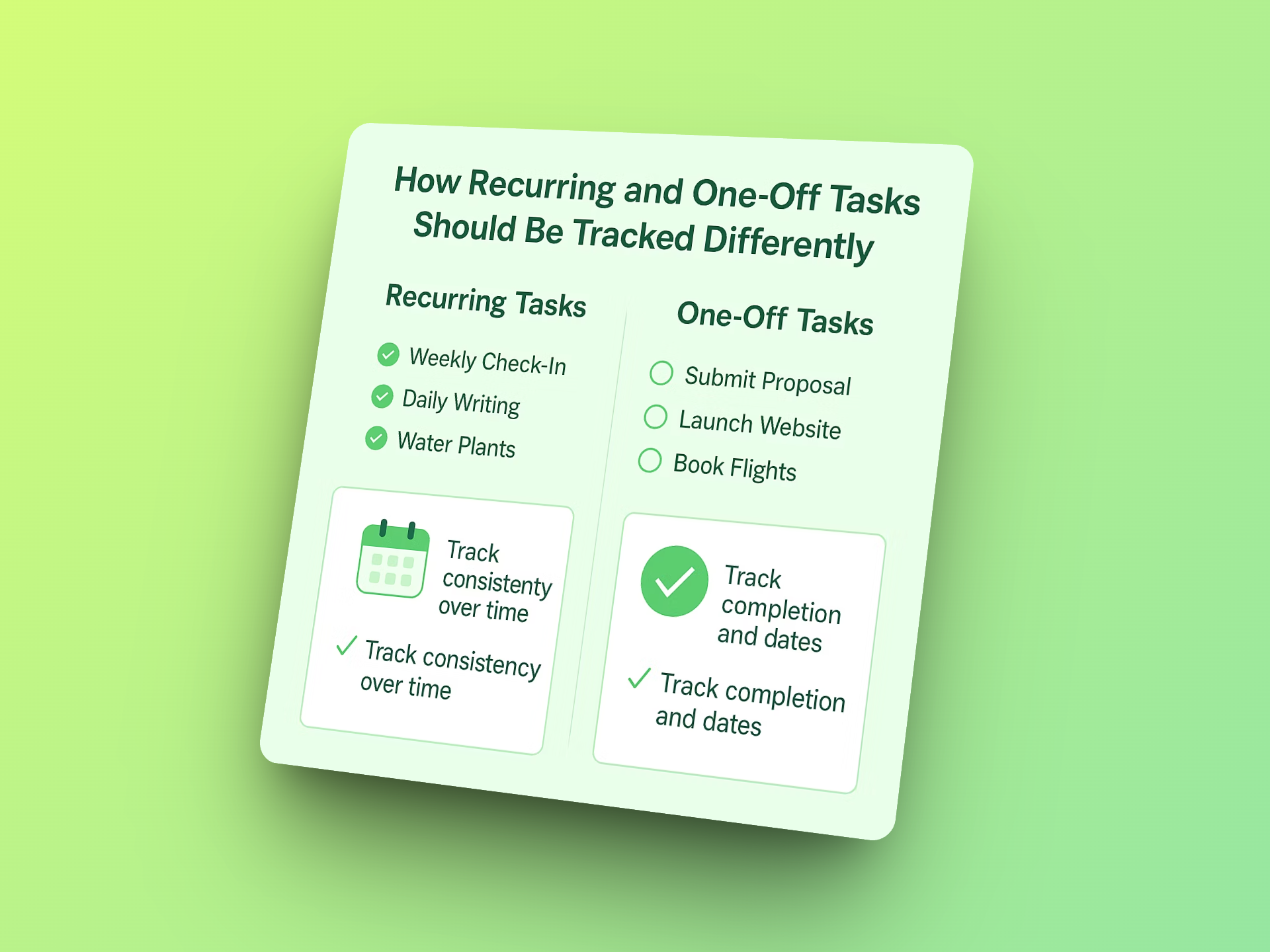
How Recurring and One-Off Tasks Should Be Tracked Differently
They might both land on your to-do list – but recurring and one-off tasks play very different roles in your workflow. Here’s why they deserve different treatment.
Most task managers treat every task the same. Whether it’s “publish newsletter” or “email accountant,” it’s just a checkbox waiting to be ticked.
But in reality, not all tasks are created equal.
Some are part of a rhythm. Others are one-time events.
And tracking them the same way? That’s where things get messy.
Let’s break down why recurring and one-off tasks should be tracked differently—and how that small distinction can make your productivity system way more useful.
🌀 Recurring Tasks: The Backbone of Consistency
Recurring tasks are the things you do over and over again. They might not be flashy, but they’re essential. Think of them as your habits with structure – behaviors you want to maintain at regular intervals.
Examples:
Weekly team sync
Daily writing session
Monthly financial review
Bi-weekly content planning
Water the plants (yes, seriously)
These aren’t goals. They’re systems.
And the value of recurring tasks is in showing up, not finishing a milestone.
How to Track Them:
Log them every time you complete them
Visualize consistency over time (streaks, heatmaps, trends)
Allow for flexibility without penalty (missing one isn’t failure)
Optionally: track how often you’re completing vs. intending
🎯 Goal: Build momentum, reinforce identity, stay reliable
🎯 One-Off Tasks: The Markers of Progress
One-off tasks are distinct. They happen once, serve a purpose, and then they’re done. They’re not about consistency – they’re about movement.
Examples:
Submit proposal
Launch website
File taxes
Book travel
Hire new team member
These are the things that move your projects (and life) forward. They come with context, deadlines, and sometimes dependencies.
How to Track Them:
Attach them to a larger goal or milestone
Prioritize based on urgency or effort
Track completion date
Review for historical reference
🎯 Goal: Ship work, resolve tasks, hit finish lines
🔁 Why Treating Them the Same Creates Noise
When recurring and one-off tasks are lumped together, your to-do list gets crowded, confusing, and emotionally fuzzy.
You don’t know what must be done today vs. what could
You get discouraged when long-term recurring tasks look “unfinished”
You forget to celebrate one-off wins because they disappear in the churn
You misread your own productivity: were you maintaining, or progressing?
By tracking them separately – but visually together (like on TaskTiley’s graph), you can see:
How consistently you’re showing up
What actual work you’ve completed
Where your energy’s going
It’s not about more data. It’s about the right kind of data.
✅ How TaskTiley Handles Both – Without the Chaos
TaskTiley lets you track recurring and one-off tasks differently – but still gives you a unified visual of your work.
Here’s how:
Set recurring tasks by frequency (daily, weekly, etc.)
Log one-off tasks manually or via integration
View everything on a 365-day grid so you can spot streaks and milestones
Build a realistic picture of what your work rhythm actually looks like
Instead of a jumbled list, you get a clear map of effort and accomplishment – together, but not conflated.
The Takeaway
Recurring tasks keep you consistent.
One-off tasks keep you progressing.
They both matter – but they don’t work the same way, and they shouldn’t be tracked like they do.
If your current system blurs that line, it might be time to upgrade your workflow.